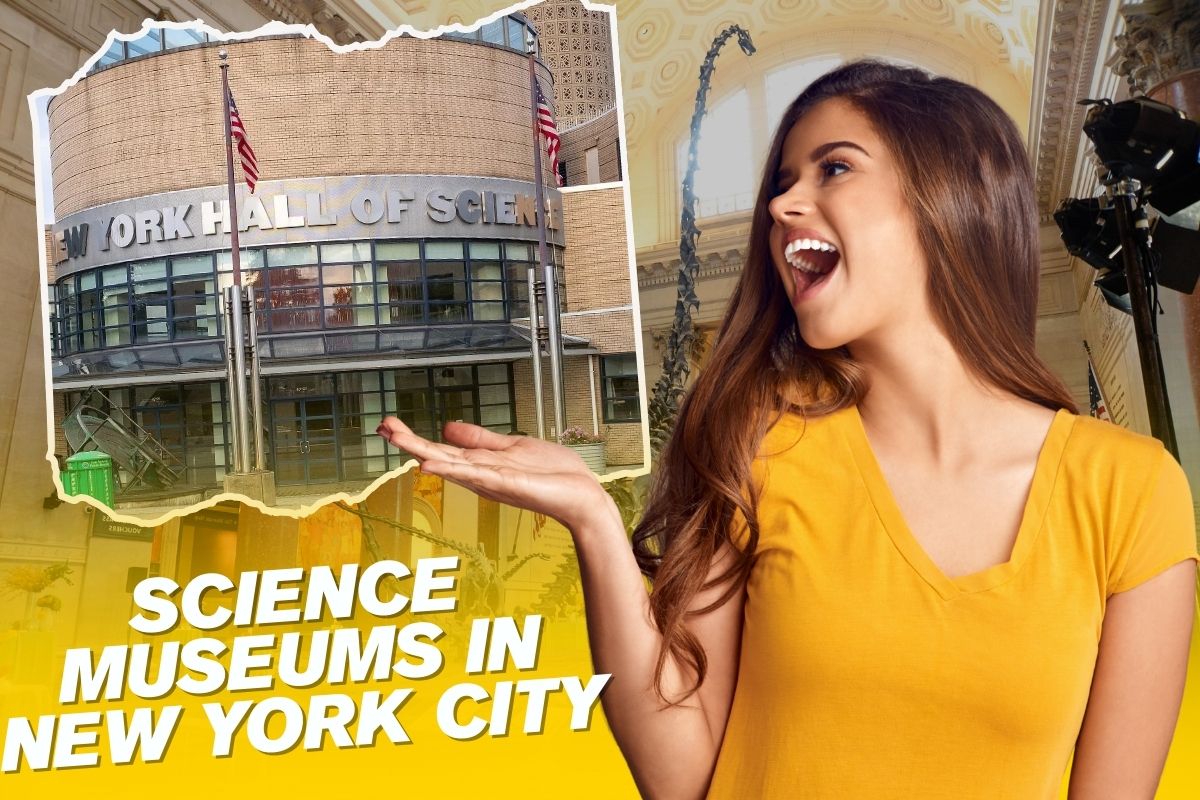Must-Visit Science Museums in New York City This Season

New York City is a haven for science lovers, offering a diverse array of museums that spark curiosity, ignite imagination, and make learning an adventure. From the mysteries of the cosmos to the marvels of mathematics, NYC’s science museums cater to all ages and interests. Whether you’re a local or a visitor, these institutions promise hands-on experiences, groundbreaking exhibits, and unforgettable journeys into the world of science.
Top Science Museums in New York City
1. American Museum of Natural History (AMNH)
Location: 200 Central Park West, Manhattan
Why Visit: One of the most iconic science museums in the world, AMNH is a treasure trove of natural wonders. Its vast collection includes dinosaur fossils, meteorites, and cultural artifacts from around the globe. The Rose Center for Earth and Space, featuring the Hayden Planetarium, offers a stunning exploration of the universe.
Highlights:
- The Hall of Dinosaurs
- The Butterfly Conservatory (seasonal)
- The Big Bang Theater
- “Extinct and Endangered” exhibit
2. New York Hall of Science (NYSCI)
Location: 47-01 111th St, Queens
Why Visit: Originally built for the 1964 World’s Fair, NYSCI is NYC’s premier hands-on science museum. It’s especially popular with families and school groups, offering interactive exhibits that encourage experimentation and play.
Highlights:
- Design Make Play workshops
- Science Playground
- “The Happiness Experiment” exhibit
- 3D Theater and Rocket Park
3. National Museum of Mathematics (MoMath)
Location: 11 E 26th St, Manhattan
Why Visit: MoMath brings math to life through engaging exhibits that show how numbers shape our world. It’s a unique destination for both kids and adults, proving that math can be fun, beautiful, and interactive.
Highlights:
- Square-Wheeled Tricycle
- Math Midway 2.0
- Human Tree fractal simulator
- Math-themed puzzles and games
4. Museum of Illusions
Location: 77 8th Ave, Manhattan
Why Visit: This museum blends science and art to create mind-bending experiences. It’s perfect for those curious about perception, psychology, and visual tricks. Great for selfies, too!
Highlights:
- Ames Room and Vortex Tunnel
- Optical Illusions Gallery
- Holograms and stereograms
- Smart Playroom for kids
5. Holographic Studios
Location: 240 E 26th St, Manhattan
Why Visit: A hidden gem in NYC, this studio-museum hybrid showcases the science and art of holography. Visitors can see 3D images without glasses and learn about the physics behind holograms.
Highlights:
- Live holography demonstrations
- Vintage holograms
- Custom hologram creation
- Behind-the-scenes studio tours
6. Science Museum of Long Island
Location: 1526 N Plandome Rd, Manhasset, NY
Why Visit: Though technically outside NYC, this museum offers nature-based science programs and outdoor exploration. It’s ideal for families looking to combine science with environmental education.
Highlights:
- Nature trails and wildlife observation
- STEM workshops
- Seasonal science camps
- Hands-on biology and chemistry labs
Why NYC Is a Science Museum Powerhouse
New York City’s science museums are more than just places to observe—they’re immersive environments that encourage participation. These institutions collaborate with schools, host public lectures, and offer programs that bridge science with art, culture, and technology. Whether you’re exploring the depths of the ocean or the edges of the universe, NYC’s museums make science accessible and exciting.
Frequently Asked Questions (FAQ)
Q1: Which science museum is best for kids?
A: The New York Hall of Science is ideal for children, thanks to its interactive exhibits, outdoor playground, and family-friendly workshops. MoMath and the Museum of Illusions also offer engaging experiences for younger audiences.
Q2: Are these museums suitable for adults?
A: Absolutely. The American Museum of Natural History and MoMath offer intellectually stimulating exhibits for adults. Holographic Studios and the Museum of Illusions are also great for grown-ups interested in visual science and perception.
Q3: How much time should I spend at each museum?
A: Plan for 2–4 hours per museum. AMNH can easily take a full day if you want to explore thoroughly. Smaller museums like MoMath or the Museum of Illusions can be enjoyed in a couple of hours.
Q4: Are there any free science museums in NYC?
A: Most science museums charge admission, but many offer free or discounted entry on specific days. For example, AMNH has a “pay-what-you-wish” policy for general admission. Check each museum’s website for details.
Q5: Can I buy tickets online?
A: Yes, all major science museums in NYC offer online ticketing. It’s recommended to book in advance, especially during weekends or holidays.
Q6: Are these museums accessible by public transport?
A: Yes. NYC’s extensive subway and bus system makes it easy to reach all these museums. Locations like AMNH and MoMath are in Manhattan and highly accessible, while NYSCI in Queens is reachable via the 7 train.
Final Thoughts
New York City’s science museums are gateways to discovery. Whether you’re marveling at a T. rex skeleton, solving math puzzles, or walking through a vortex tunnel, these institutions make science thrilling and tangible. They’re not just places to learn—they’re places to wonder.

